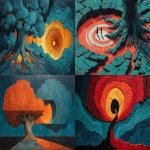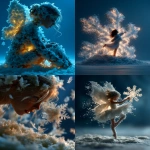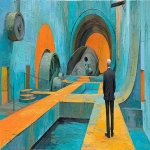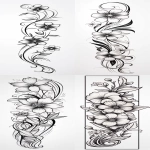Explore the Best AI Image Gallery

Beyond the Canvas: How AI-Powered Visual Experiences are Transforming Creativity
The realm of creativity is undergoing a profound metamorphosis fueled by the convergence of artificial intelligence (AI) and visual technology. AI-powered visual experiences are no longer a futuristic concept; they are reshaping how we create, consume, and interact with art, design, and media. From generating stunning visuals to personalizing immersive experiences, AI is empowering artists, designers, and innovators to push the boundaries of imagination.
Applications Redefining Artistic Expression
- Generative Art:
- Interactive Installations:
- Personalized Storytelling:
AI algorithms can analyze vast datasets of art styles and generate unique, original artworks. This opens up exciting possibilities for exploring new aesthetics and pushing the boundaries of artistic expression.
AI-powered installations respond to user input, creating dynamic and engaging experiences that blur the lines between art and technology. Imagine an artwork that evolves based on viewer emotions or movements.
AI can tailor narratives and visual experiences to individual preferences, crafting immersive stories that resonate deeply with each viewer. This has implications for everything from interactive gaming to personalized advertising.
Empowering Designers and Creators
AI-powered tools are becoming invaluable assets for designers across various fields:
- Design Assistance:
- Prototyping and Iteration:
- Accessibility Enhancement:
AI can assist in tasks such as generating design concepts, suggesting color palettes, or optimizing layouts, freeing up designers to focus on the creative vision.
AI can rapidly generate prototypes based on designer input, allowing for faster iteration and refinement of ideas.
AI-powered tools can help create more inclusive designs by generating captions, translating text, or adapting interfaces for users with disabilities.
Ethical Considerations: Navigating the Complexities
The rise of AI-driven visual experiences also raises important ethical considerations:
- Bias and Fairness:
- Copyright and Ownership:
- Authenticity and Deception:
AI algorithms are trained on data, which can contain biases that reflect societal inequalities. Its crucial to address these biases to ensure fairness and inclusivity in AI-generated content.
Questions arise regarding the ownership of AI-generated artwork. Who holds the copyright when an algorithm creates a piece? Legal frameworks need to evolve to address these complexities.
AI can create incredibly realistic visuals, raising concerns about the potential for misuse, such as generating deepfakes or spreading misinformation.
Future Trends: A Glimpse into the Next Generation
The future of AI-powered visual experiences is brimming with possibilities:
- Enhanced Immersion:
- Personalized Creativity Tools:
- Human-AI Collaboration:
VR and AR technologies will integrate with AI to create truly immersive experiences, blurring the lines between the physical and digital worlds.
AI-powered tools will become increasingly sophisticated, offering personalized guidance and assistance to empower every individual to express their creativity.
The future lies in a collaborative relationship between humans and AI, where each leverages their unique strengths to create innovative and impactful visual experiences.
As AI continues to evolve, its impact on the creative industry will only intensify. By embracing its potential while navigating the ethical complexities, we can unlock a new era of creativity, pushing the boundaries of artistic expression and shaping the future of how we experience the world around us.













](https://images.ai-img.art/thumbnails/150/c39d99bb3fe70fc91a3957bf15387288d25d9a69621c29d6f25846da6f7905a4.webp)




](https://images.ai-img.art/thumbnails/150/2850181349d78b8cf8e4109e1364305202a7dabe9a45aeb3b282170d13e1567f.webp)

